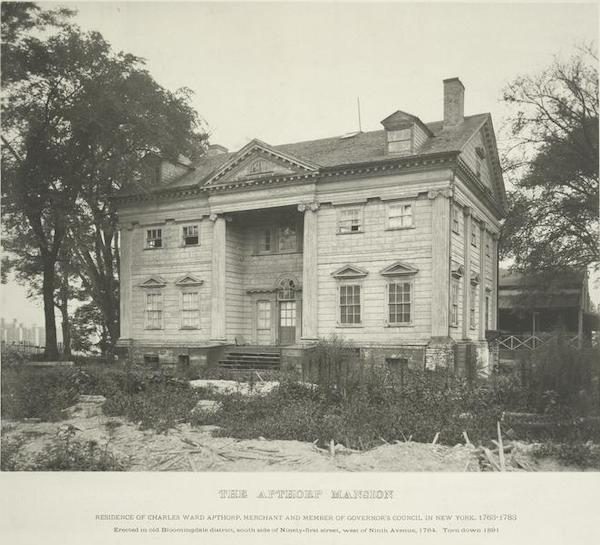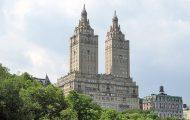
New York Public Library
Long before the luxurious Apthorp building graced the Upper West Side, the Apthorp Mansion sat on a hill near where 91st and Columbus Avenue is today.
Advertisement
The owner was Charles Wade Apthorp, who had his mansion built in 1764. Back then, the Upper West Side area was known as Bloomingdale, a rural village with hills and meadows. Apthorp was a wealthy British loyalist, a successful merchant, and a member of the Governor’s council from 1763 to 1783.
The 18-acre mansion overlooked the Hudson River and the New Jersey Palisades. Although it was referred to as the Apthorp Mansion, it was called Elmwood for the beautiful Elmwood trees on the property.
While it’s rare to find photographs or drawings of Elmwood, a 1780 newspaper ad for the property was reprinted in Peter Salwen’s Upper West Side Story, and it delves deeper into the beauty of the estate:
[perfectpullquote align=”full” bordertop=”false” cite=”” link=”” color=”” class=”” size=”16″] “… About 300 acres of choice rich land, chiefly meadow, in good order, on which are two very fine orchards of the best fruit. . . . An exceedingly good house, elegantly furnished, commanding beautiful prospects of the East and North-Rivers, on the latter of which the estate is bounded.”[/perfectpullquote]
Advertisement
Mary Louise Booth, a contemporary historian in her day, also wrote about the mansion: [perfectpullquote align=”full” bordertop=”false” cite=”” link=”” color=”” class=”” size=”16″]
“Around this old mansion still linger the stateliness and beauty of its aspect in the past…The stately recessed portico, with its supporting Corinthian columns, the corresponding pilasters, and the high, arched door-way at the middle of the house opening into a spacious hall, give an aristocratic air quite superior in pleasantness of impression to any of the more pretentious of modern houses in the city…”
[/perfectpullquote]The home was even the perfect setting for Apthorp’s daughter, Maria, to marry politician Hugh Williamson on January 3, 1789.
The Apthrop mansion managed to survive the Revolutionary War. After the war, Apthorp himself was charged with treason but was eventually released and allowed to keep the property. However, when he died in 1797, his ten children divided and sold off the land.
According to Untapped Cities, the 68th Regiment used the mansion as a parade ground. Unfortunately, the Apthorp Mansion was also the site of the Orange Riots in 1870. But by the 1890s, it became known as Elm Park because it was used as a picnic ground site. The main house was converted into a beer and dance saloon. Elm Park was popular among the German immigrants in Manhattan.
Advertisement
The Apthorp Mansion was the cause of many legal problems regarding property lines between the Apthorp heirs and former landowners. This legal battle lasted a century, even after the demolition. When the lawsuits were finally settled in 1910, the New York Times estimated the Apthorp property to be worth $125,000,000.
Although Mary Louise Booth said “[The Apthorp mansion] ought to be preserved as an interesting historical relic of the metropolis,” it was ultimately torn down in 1891 to make way for what’s now known as 91st Street. When it was demolished, the New York Times wrote, “an old house is like an old citizen, in that it deserves an ‘obituary.’”



